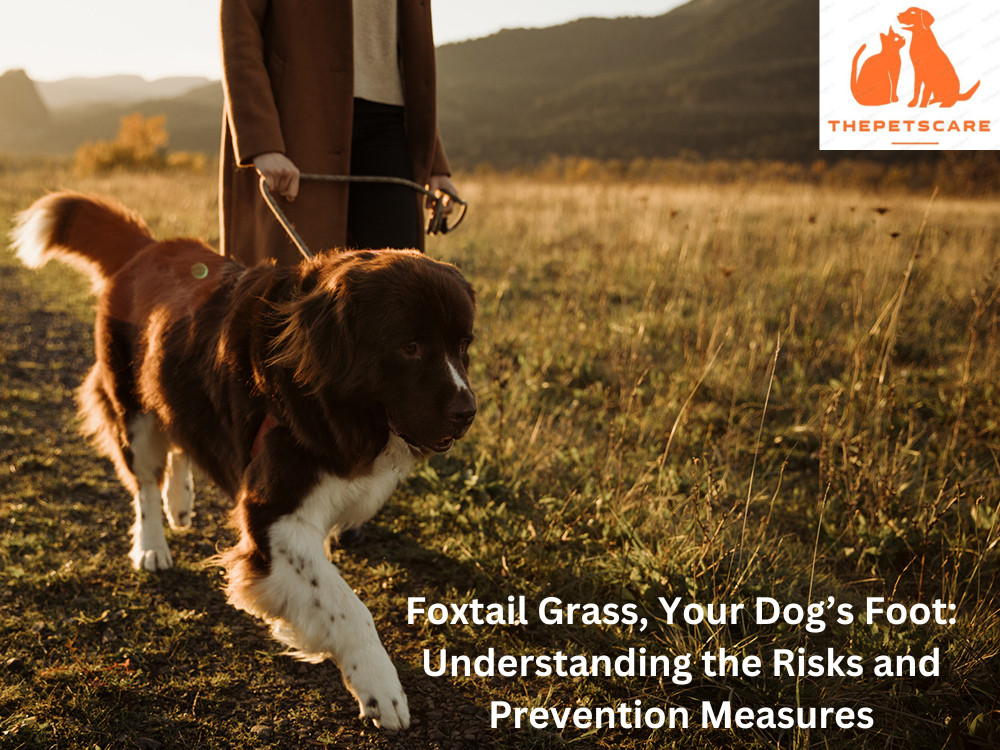We and our pets can enjoy the great outdoors in all its glory. Foxtail grass is a hidden danger in the beautiful scenery of nature. Dog owners need to be aware. These plants, which seem harmless at first glance, can be a real threat to the health of our dogs and their paws. This comprehensive article will explore the dangers of foxtail for dog paws. We’ll also discuss the symptoms of foxtail-related issues and the essential measures that can be taken to protect our pets during outdoor activities.
Section 1: What Is Foxtail Grass?
Foxtail grass is a term used to describe several grasses that are commonly found throughout North America, especially in the western states. The name of these grasses comes from the bushy appearance they have when they produce their seed heads. The grasses can be found in fields, on hiking trails, and in residential areas. They are often in untamed patches. The most common time for them to grow is during the warm months from late spring until summer.
Section 2: Dangers of Foxtail as a Dog Paw
Foxtail grasses are not as harmless as they appear. Their seed heads are shaped like sharp barbed structures. These structures are meant to burrow in the ground, and then latch on to passing animals or other objects. This helps disperse seeds. This adaptation is dangerous for dogs.
The barbed seed heads that can be found in foxtail grass can get stuck on a dog’s paws, nose, eyes, and throat when they walk through the area. The most common place for foxtails is between the dog’s toes. Foxtails, once embedded, can cause anything from mild irritations to serious infections and abscesses.
Section 3: Symptoms of Foxtail Related Issues
It can be difficult to detect foxtails on a dog’s feet or other parts of the body because they are small and hard to spot. The following signs may indicate that a dog has foxtails:
1. Constant licking and biting of the paws, or other parts of the body
2. The swelling and redness between the toes
3. The limbs are hesitant to be weighed down.
4. Sneezing or nasal discharge
5. Head shaking and ear scratching
6. Watery eyes with pawing on the face
7. Coughing or gagging
It is important to seek immediate veterinary care if any of these symptoms appear to avoid further complications.
Section 4: Prevention Measures
We can protect our dogs by taking preventive measures.
Avoid Foxtail-Infested Areas – Be aware of areas where foxtail is common and avoid these locations when you are out walking or doing outdoor activities with your pet.
b) Paw Checks – After an outdoor excursion, inspect your dog’s ears, nose, and eyes for signs of irritation or foxtails.
Keep the Grass Short – Trim your lawn regularly. The shorter grass will contain fewer mature seed heads.
Use dog-friendly booties. Consider using dog boots or paw balms as an additional layer of protection to protect your dog’s feet during outdoor adventures.
e) Regular grooming is important, particularly for dogs with longer fur. This helps reduce the chance of foxtails getting entangled.
Section 5: Foxtails Removal
It is important to take care if you suspect your dog may have encountered foxtails. It is dangerous to try and remove foxtails on your own, as you may end up pushing the barbed structure even deeper into the dog’s skin. This can exacerbate the problem. Seek immediate veterinary care to remove foxtails safely and effectively and avoid any complications.
It may appear harmless, but foxtail grass poses a serious risk to our canine friends, especially their paws. Dog owners can protect their pets by recognizing and understanding the dangers associated with foxtails. You can protect your dog by taking preventive steps, like avoiding areas infested with foxtails and checking and grooming their paws regularly. To keep your dog from suffering from foxtails, you must be proactive and attentive while out in outdoors.


